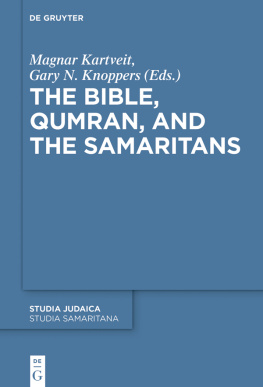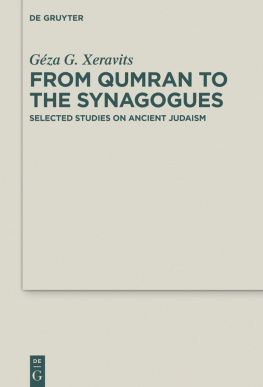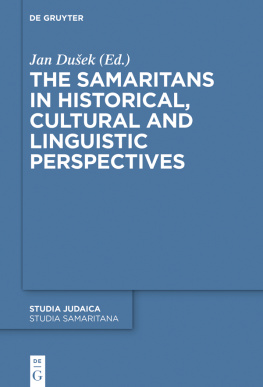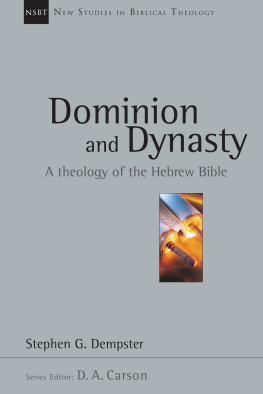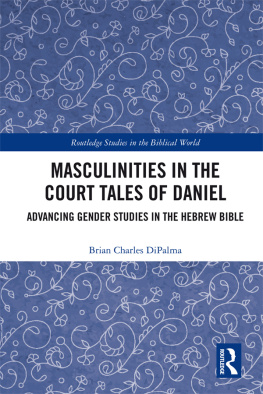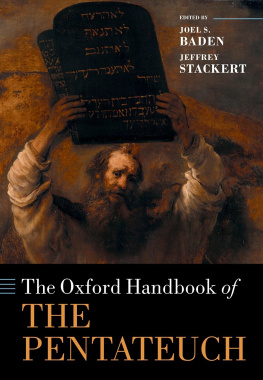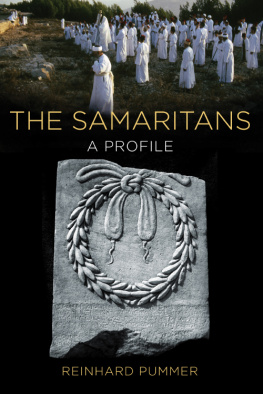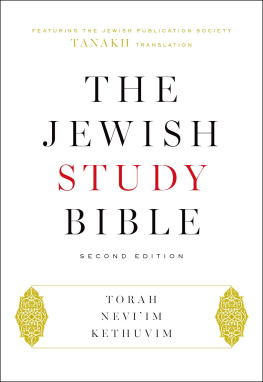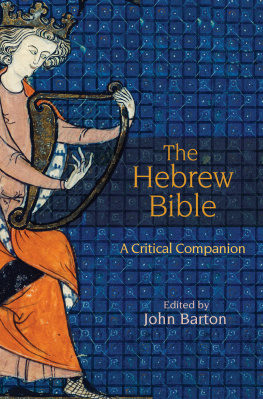Table of Contents
Guide

The Bible, Qumran, and the Samaritans
Studia Judaica
Forschungen zur Wissenschaft des Judentums
Begrndet von Ernst Ludwig Ehrlich
Herausgegeben von
Gnter Stemberger, Charlotte Fonrobert,
Elisabeth Hollender, Alexander Samely, Irene Zwiep
Band 104

Studia Samaritana
Edited by
Magnar Kartveit, Gary N. Knoppers, Stefan Schorch
Volume 10
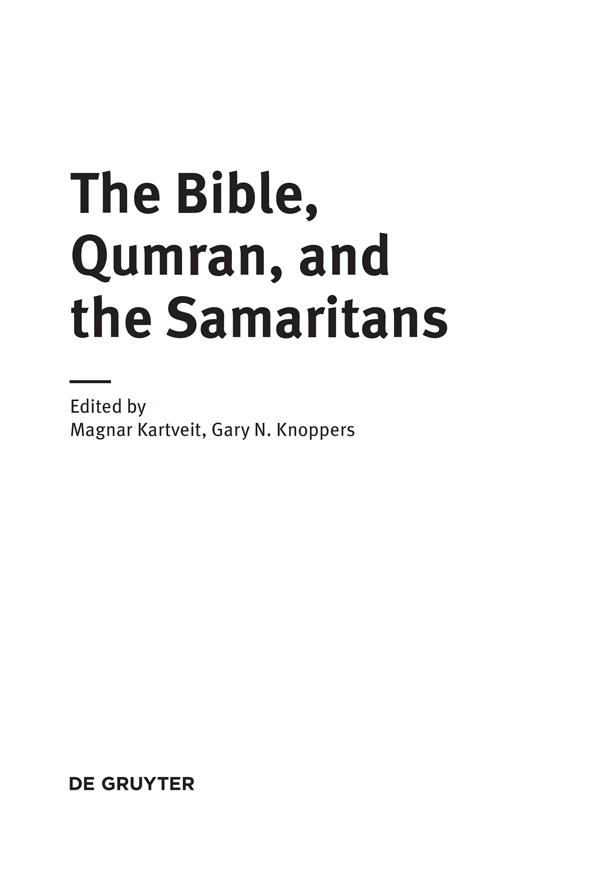
ISBN 978-3-11-057522-4
e-ISBN (PDF) 978-3-11-058141-6
e-ISBN (EPUB) 978-3-11-058037-2
ISSN 0585-5306
Library of Congress Control Number: 2018945373
Bibliographic information published by the Deutsche Nationalbibliothek
The Deutsche Nationalbibliothek lists this publication in the Deutsche Nationalbibliografie; detailed bibliographic data are available on the Internet at http://dnb.dnb.de.
http://dnb.dnb.de abrufbar.
2018 Walter de Gruyter GmbH, Berlin/Boston
www.degruyter.com

In memoriam , Peter W. Flint
21 January 1951 3 November 2016
Magnar Kartveit and Gary N. Knoppers
Qumran, Mount Gerizim, and the Books of Moses
The study of the Pentateuch and research on the Samaritans have changed fundamentally over the last decades in refreshingly different ways. In this book, the focus is on the change created by new material emerging from two sets of disparate sources: the ancient manuscripts from the area of the Dead Sea, especially from Qumran, and the archaeological excavations and ancient inscriptions at Mount Gerizim. Material from these two sites has created a common field of research for two different groups: scholars working with the Pentateuch and experts on the Samaritans. Earlier, scholars who worked in Old Testament/Hebrew Bible studies could leave the Samaritan material mostly to experts in that area of research and scholars studying the Samaritan material needed only sporadically to engage in the academic study of the Hebrew Bible. Scholars in the field of early Judaism might wish to consult early Samaritan evidence and scholars in Samaritan studies might wish to work comparatively with early Judaic texts, but the study of the Hebrew Bible was considered, for the most part, to be anterior and distinct from Samaritan studies. This is no longer the case. The pre-Samaritan texts from Qumran and the results from the excavations on Mount Gerizim have created an area of study common to previously separate fields of research. Scholars coming from different directions meet in this new area and realize that they work on much the same questions and with much common material.
The first major change in Pentateuchal and Samaritan studies was the discovery of the pre-Samaritan texts from Qumran. This shift began in 1955 when Patrick W. Skehan presented what he called Exodus in the Samaritan Recension from Qumran. His article announced that among the Qumran texts there was a scroll of Exodus with features that were previously only known from the Samaritan Pentateuch. With the following words, Skehan introduced 4QpaleoExod m :
The significance of this discovery was enhanced by these observations: The script cannot by any stretch of the imagination be called Samaritan. Neither is the orthography Samaritan.
Skehans presentation opened new insights into the history of the text of the Torah. With all the Dead Sea manuscripts now published, we are able to work with this material on a broader basis. There is no doubt that the Samaritan Pentateuch has predecessors in Qumran, not only in 4QpaleoExod m , but in several manuscripts of the so-called pre-Samaritan text type. They constitute some 11 percent of the total of Pentateuchal texts from the Dead Sea area.
The second major development in this field is constituted by the results from the archaeological excavations on Mount Gerizim. The site, Jebel e-ur , had been excavated by A. M. Schneider from Gttingen in 1930, but new excavations were undertaken by Yitzhak Magen and his team, beginning in 1982. During the next 25 years, they discovered 395 inscriptions and fragments of inscriptions in Hebrew and Aramaic, as well as a number of inscriptions in Greek. No images were found, but some 300,000 fragmentary animal bones from sacrifices were discoveredall this in addition to the buildings, monumental walls, towers, and chambers that were uncovered. Most importantly, a sacred precinct was discovered, the probable site for the Samaritan temple.
Josephus, however, wrongly ascribed its construction to the Sanballat who lived in the days of Alexander the Great; in fact, it was built by another Sanballat, who lived in the time of Nehemiah, some one hundred years earlier (Jos., Ant . 11: 302, 321 325).
In the third century BCE, in the Hellenistic period, the temple and the sacred precinct were rebuilt, and a city began to rise around them. The city expanded until it reached its maximal size in the second century BCE, with an overall area of about 400 dunams (800 m. long and some 500 m. wide), becoming the capital of the Samaritan people and its religious and cultic center.
If there was a Yahwistic temple on Mount Gerizim from the fifth to the second centuries BCE, the finalization of the contents and the text of the Pentateuch happened at a time when this temple existed. Old Testament/Hebrew Bible scholars have begun to realize over the last years the consequences of this momentous discovery and are increasingly relating their studies to this reality.
These two major developments in biblical and Samaritan studies formed the background for two sessions at the 22nd congress of The International Organization for the Study of the Old Testament (IOSOT). The congress took place at the University of Stellenbosch, South Africa, from September 4 to 9, 2016. For the first time in the history of this organization, a research group for Samaritan studies was set up. The good attendance at the sessions showed that the time had come for a reorientation in this area of research. The invitations to the presenters at the research group were met with positive responses and most of the invited scholars were able to attend the congress and contribute to the research group. Their presentations were followed by lively and interesting discussions. The presenters were free to choose topics for their own lectures, but the overall idea was to delve into the area where Samaritan studies and Old Testament/Hebrew Bible studies overlap. It is no longer desirable or even possible to conduct these studies in isolation from one another, but to engage in a dialogue for the common good. It is a pleasure to present in this volume the contributions delivered in Stellenbosch. All the lecturers readily agreed to have their presentations published in the series Studia Samaritana.
It was, therefore, with great sadness that we received the message that one of the presenters in Stellenbosch, Peter W. Flint, had died on November 3, 2016. He had been involved in research of the It was an obvious choice to invite him to the research group inside the IOSOT-congress and he suggested a contribution on Two Pre-Samaritan Scrolls found at Qumran: One Especially Close to the Samaritan Pentateuch, the Other a Transition Text between the S[amaritan] P[entateuch] and the Septuagint. The two scrolls were 4QpaleoExod m (4Q22) and 4QNum b (4Q27), but he also discussed a series of other texts of the pre-Samaritan and Reworked Pentateuch text types. Flint found 4QpaleoExod m to be close to the Samaritan Pentateuch, whereas he found 4QNum b to be a text in between the text type of the Samaritan Pentateuch and the text type of the Septuagint. In the presentation, he was able to exploit insights from relevant scholarly contributions, and to locate his own solutions to the problems in relation to these discussions. The paper in detail analyzed the material at hand and discussed many instances in which the Dead Sea Scrolls present particularly interesting readings. A lively discussion followed his presentation.

